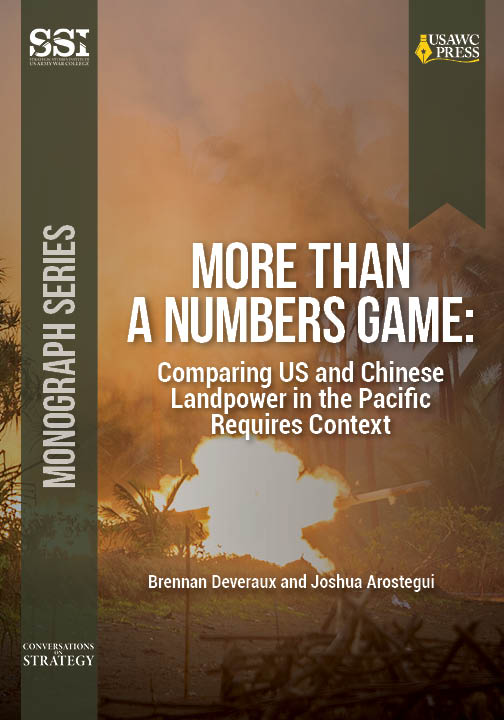Brennan Deveraux and Joshua Arostegui

This monograph establishes a contextual baseline that serves as the framework for future comparisons of the US Army and the People’s Liberation Army Army. It examines differences in five key components of land warfare: the two nations’ landpower definitions, uses of land forces to build relationships, underlying warfare concepts, associated modernization efforts, and varying approaches to simulating land warfare in the region. In examining these components, the authors identify warfare intangibles that highlight analytical findings in a way that promotes future research. The existing scholarship comparing the two forces is often limited in scope, focusing on funding or comparing capabilities such as the number of specific weapons systems. This monograph differs from existing scholarship by providing a broad, in-depth comparison of critical landpower components. The analysis challenges long-held assumptions about US Army superiority and sets a foundation for future research. The authors rely heavily on primary sources and ample secondary documents translated directly from Chinese vernacular sources. This study’s conclusions challenge conventional thinking surrounding the People’s Liberation Army and will assist US military and policy practitioners in assessing the relative strengths and advantages the US military can grow or exploit.
Keywords:
China, Indo-Pacific, relative advantage, landpower, comparative factors, all-domain operations, modernization, jointness, simulating warfare, warfighting intangibles